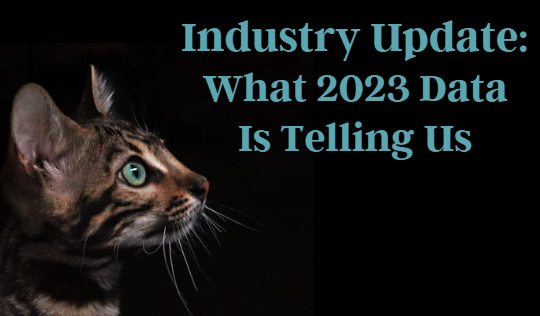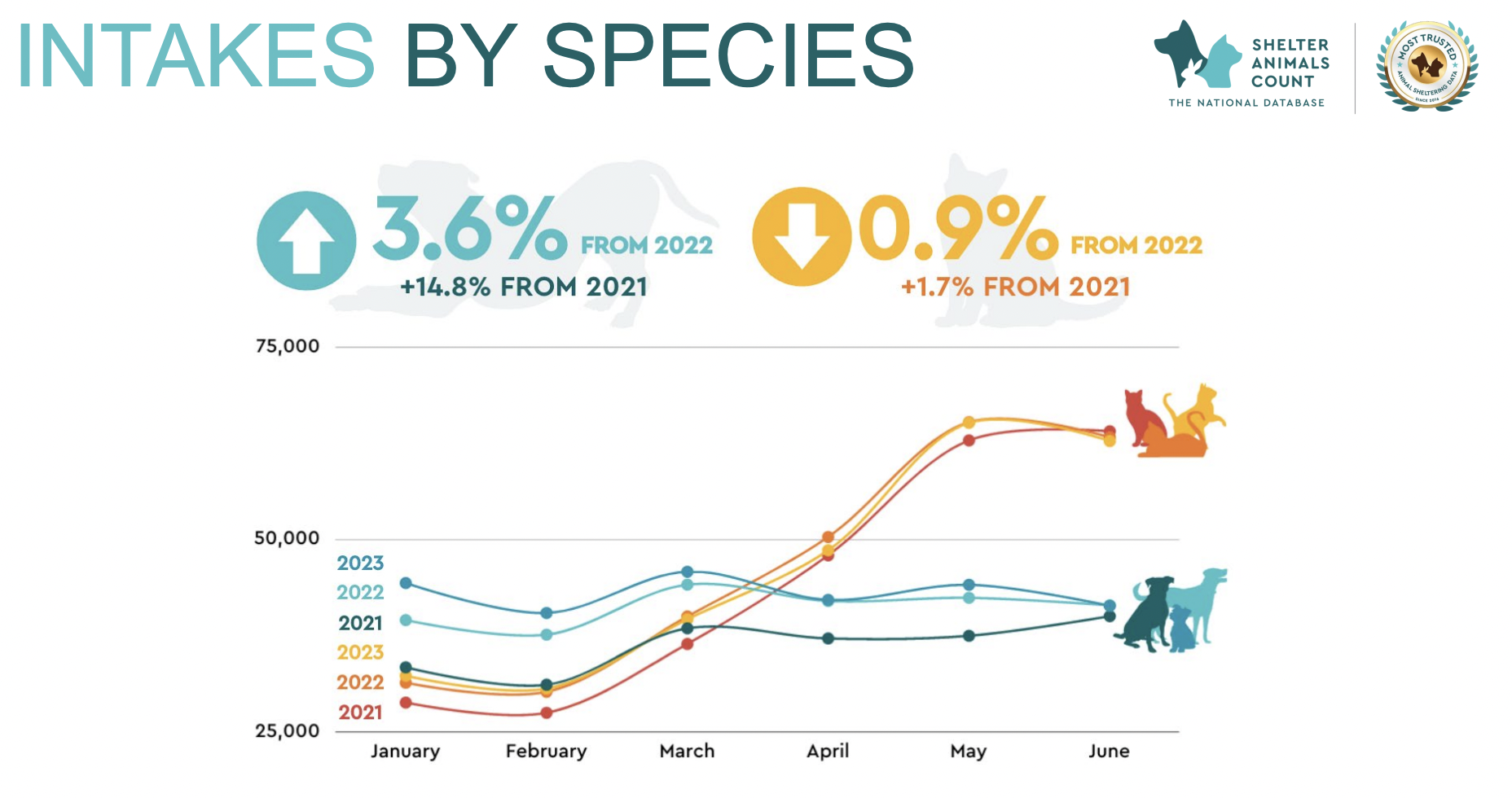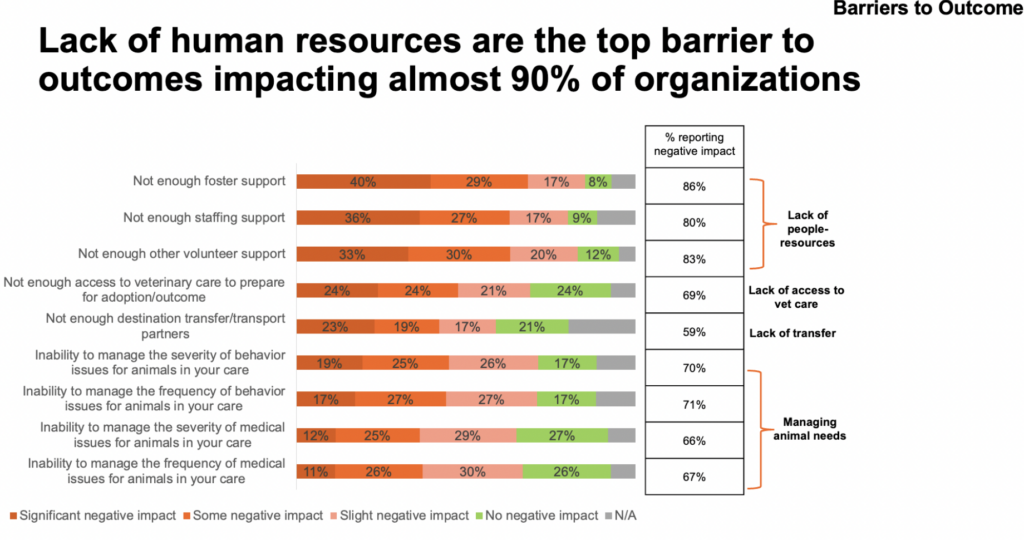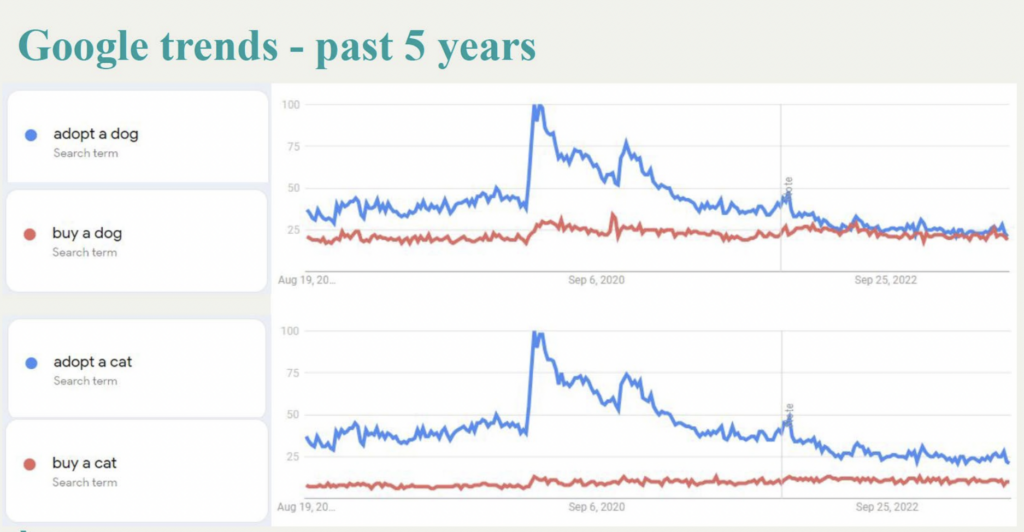News, ideas & inspiration from industry leaders

What 2023 Data Is Telling Us So Far: 5 Key Takeaways
Rates, percentages, reported experiences…. The variety and volume of data presented at last week’s Roundtable, Industry Update: What 2023 Data Is Telling Us, presented quite a story of what’s been happening, and what’s to come, in our profession. We’ve highlighted five key takeaways here. And while you wait for the forthcoming follow-up blog from the presenters—Stephanie Filer of Shelter Animals Count, the ASPCA’s Melissa Thibault and Adopt a Pet’s April Hunstman, CAWA—you may wish to listen to a recording of the info-packed, thought-provoking session.
Overall, the situation is not as dire for cats as it is for dogs
Pointing to three years of Q1 and Q2 data from 2021-2023, Stephanie Filer of Shelter Animals Count shared that dog intakes are up almost 4% from last year, while cat intake is down about a percentage point from last year. When comparing intakes to outcomes, however, we begin to see why many shelters are filled beyond capacity. “For dogs, though we’re seeing 1 percent more outcomes than last year, there are 4% more intakes,” says Filer. “Compared to 2021, that’s 6% more outcomes and 15% more intakes. This is reflected in the fullness that shelters are reporting, and it’s continuing to snowball on itself.”

There is hope
The data is showing that an organization’s current experience may vary based on type—revealing a hopeful trend. Rescue organizations are starting to reduce their dog populations, with outcomes now outpacing intakes for dogs. “It needs to continue at a higher rate,” says Filer, “but if that continues, that will hopefully start to unclog some of the bottlenecks in the system.”
The number one barrier to outcomes is…
Why are more animals coming in than are leaving? Ready for the number-one answer that animal welfare organizations reported in an ASPCA shelter-facing survey conducted last July? “You may be surprised that the lack of human resources comprise the top 3 barriers to outcomes,” shares the ASPCA’s Melissa Thibault. Not enough foster support, not enough staffing support and not enough volunteer support scored above not enough access to veterinary care.

Where do puppies come from?
We know that shelters are seeing less puppies come in than they used to, so where are folks getting pups less than 12 weeks old? According to Adopt a Pet data shared by April Hunstman, CAWA, the breakdown is as follows:
- Breeder: 24.1%
- Friend/Family/Inherited: 26.2%
- Litter: 5.6%
- Pet Store: 21.5%
- Shelter: 15.9%
- Stray/abandoned: 6.7%
What Google is telling us
For insights into how the pet-owning public is thinking, Hunstman explored Google Trends to help answer the questions surrounding adopting vs. buying. Are we losing adopters? Are people buying more? She compared search terms side by side over 5 years, and found the data surrounding dogs particularly interesting. “In 2018 & 2019, more people were searching ‘adopt a dog’ than ‘buy a dog,’” she shares. “But now, the terms are even. There are just as many people searching ‘buy a dog’ as frequently as ‘adopt a dog.’”

For additional insights on what’s happening now in shelters, and a forecast of what’s to come for the rest of the year, listen to the recorded roundtable.


